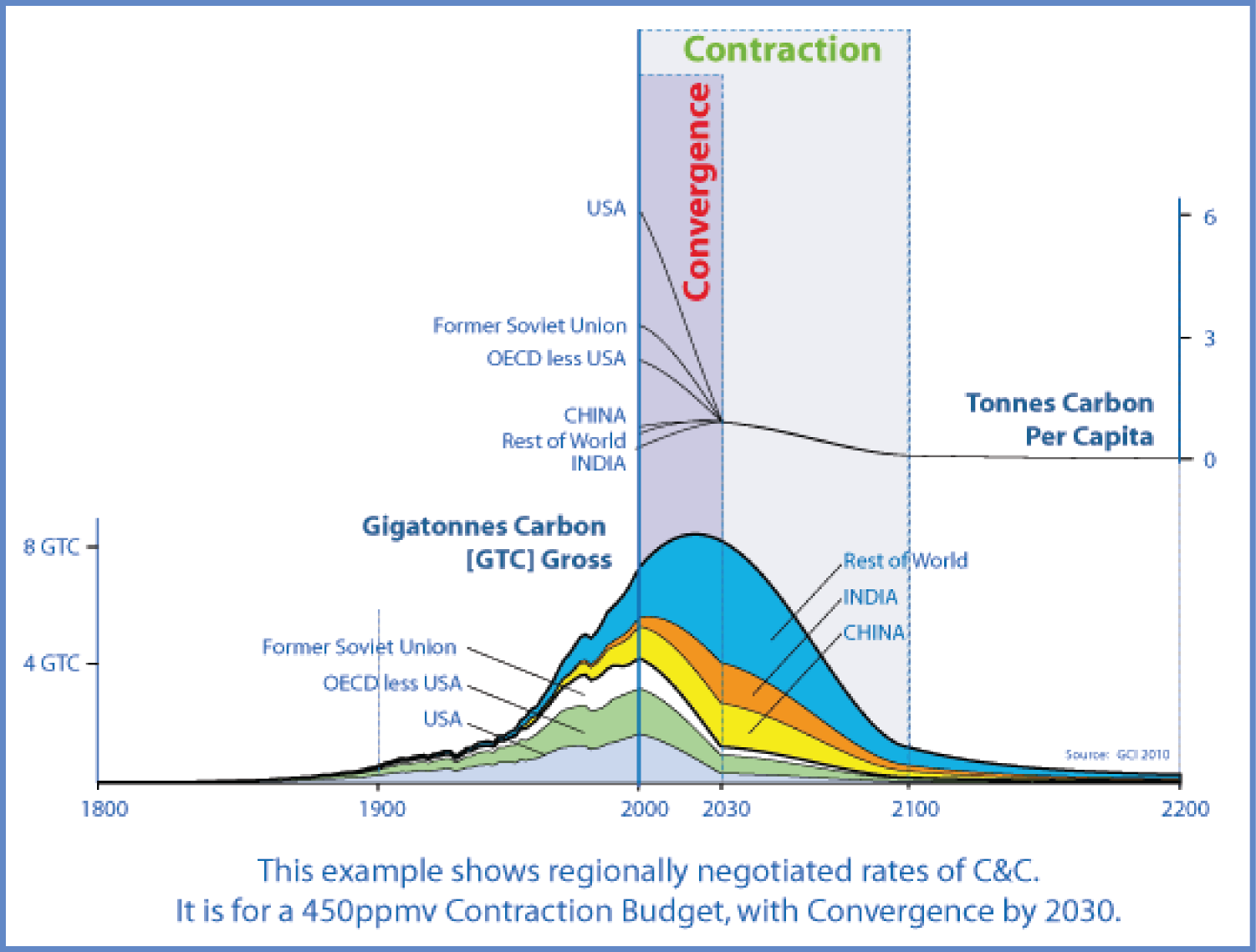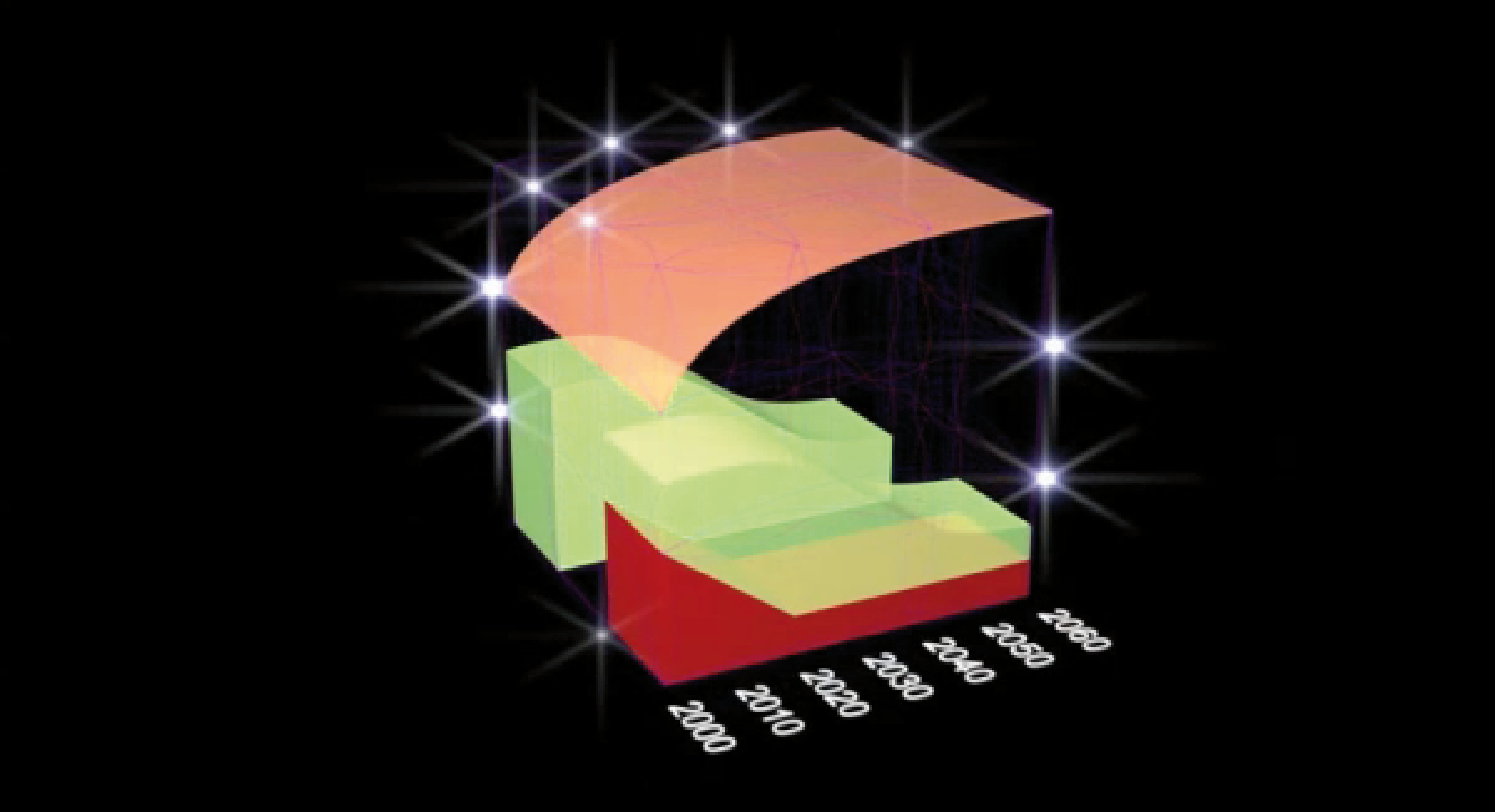C&C is an emissions management model that relates to the 'objective' and the 'principles' of the United Nations Framework Convention on Climate Change [UNFCCC].
First tabled at UN by GCI in 1996 briefing - Agreed in principle at COP-3 - Now widely cited and supported - Information on C&C 'rates' here - 'Incontestability' of C&C debated here.
C&C was adopted in the UK Climate Act in 2008 but then mishandled at COP-15 also linked here. The 'climate-gap' is now wider than ever, but COP-18 can yet correct this.
The Objective of the UNFCCC is to achieve a safe and stable greenhouse gas GHG concentration in the global atmosphere.
Its Principles are precaution and equity.
Concentration of GHG is rising in the atmosphere and the oceans due to rising human emissions and changing rates of 'sink-efficiency'.
Contraction refers to the 'full-term event' in which the future global total of greenhouse gas [GHG] emissions from human sources is shrunk over time in a measured way to near zero-emissions within a specified time-frame. The example below shows 90% by 2100. Calculating future emissions contraction, looking at concentrations and sink performance, is a non-random way of responding to the objective of the UNFCCC.
Convergence refers to the full international sharing of the emissions contraction-event, where the 'emissions-entitlements' for all countries result from them converging on the declining global per capita average of emissions arising under the contraction rate chosen. Converging at a rate to be agreed - the example shows 2030 - is a non-random way of responding to the principle of 'equity' in the UNFCCC, whilst still meeting its objective.
Negotiating the rate of convergence is 'the main equity lever'.Negotiating UNFCCC-compliant rates of C&C beyond COP-17 still possible but incresingly difficult
Transparently goal-focusing negotiations at the UNFCCC this way, recognizes its 'precautionary principle'. It makes compliance with its objective less unlikely than does the randomness of the negotiations there so far - eg at COP-15 and eg at COP-16
Different rates of C&C principle shown here & here & here
C&C NEWS
C&C "Well-Tempered Climate Accord"
C&C - "Pythagorean Structure"
". . . Takes Two to Tango . . . " [link]
Pythagorean Earth:Venus Sun-Orbits
350 ppmv takes 350 GTC [maybe]
Welcome to the C&C home-page - You can SEARCH this site ..........
NEWS is here and you can Follow @aubreygci



